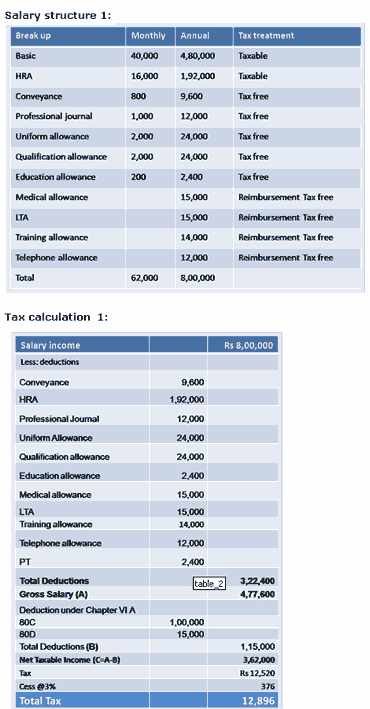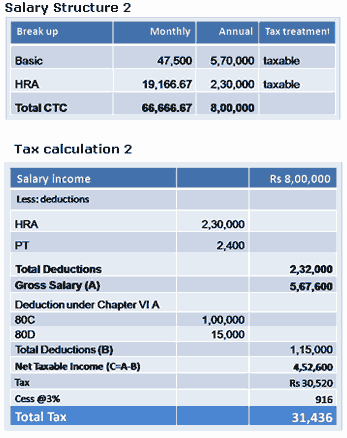
We all know the numbers on the CTC (cost to company) but the take home is vastly different. This is mostly due to one single component -- Taxes. Taxes are applicable on most aspects of our salary. However, there are a few ways you can save on taxes by way of deductions. The most used sections under the IT Act, 1961 are -- 80C, 80D, 80G and Sec 24.
But, did you know you can save much more on taxes by structuring your salary better?
Let us consider a few components that can be used to reduce the tax liability on your salary income:
Allowances/ reimbursements
Allowances are normally paid irrespective of the employee actually incurring them. These are fully taxable if no bills are provided. However, if the expenses are actually incurred and bills provided, they are not taxable up to a specified limit under each head.
Conveyance
For conveyance, up to Rs 800 per month is allowed as deduction without providing any bills.
Medical allowance
Bills have to be provided; up to Rs15,000 per annum is allowed as deduction. This can be claimed for self, spouse, children, parents and siblings who are dependent on the assessee.
Leave and travel allowance:
Two trips in a block of four years is allowed and only travel within India can be claimed as deduction. It can be claimed for self, spouse, children, parents but only if the employee (assessee) is travelling along with them. There is no maximum limit on this, but the unutilised amount will be paid once the block is completed (after deducting taxes).
Education allowance
An amount of up to Rs 2,400 per annum is tax-free.
Qualification allowance
An amount of Rs 24,000 per annum is tax-free.

further...
Investmentyogi.com is a one-stop personal finance website which helps in managing finances, investments and taxes through services like financial planning, online tax filing, budgeting and 'Ask the Expert'.

An amount of up to Rs 14,000 per annum is tax-free if the employee provides relevant bills.
Telephone allowance
An amount of Rs 12,000 per annum is tax free if the phone is used for official purposes and bills submitted.
HRA
House Rent Allowance can be claimed if one lives in a rented premises and the rent exceeds 10 per cent of the salary. The actual HRA exempted from tax is least of the following:
Ho it works
Let us look at how these deductions work.
Mr Raj is an employee with a CTC of Rs 8 lakh pa for FY (Financial Year) 2009-10. The difference in his tax liability is illustrated in the image alongside.
further...

While the first illustration brings taxable income into the second tax bracket, here's a look at a less tax-friendly break-up.
So the next time you are changing your job or negotiating your salary with the HR, keep salary structure in mind and try to get it optimised. The right salary structure can save a lot of taxes in addition to the deductions available.